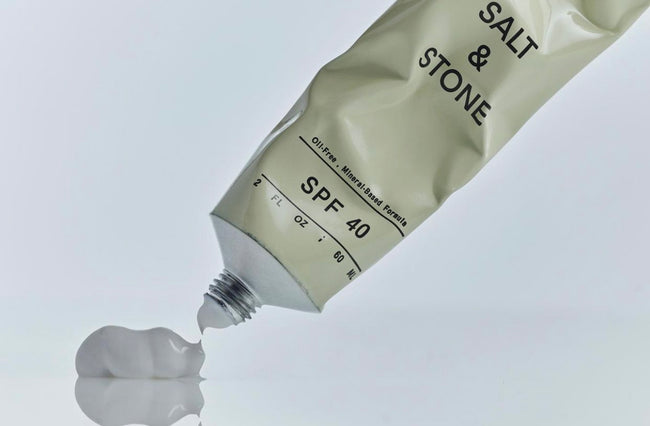The Skinny on Sunscreen

We put our skin through a lot of things that can damage it -- stress, sugar, smoking etc. But one of the most unhealthy things you can subject your skin to on a daily basis is improper exposure to the sun’s harmful rays, especially in the summer or in warm, sunny climates when we tend to be outdoors in direct sunlight for more than 30 minutes.
UV Rays & Skin
There are three types of rays that are damaging to our skin:
UVA rays age skin cells, can damage their DNA, and can play a role in skin cancer formation. These rays penetrate more deeply into the skin and play a greater role in premature skin aging changes including wrinkle formation (photoaging). There are approximately 500 times more UVA rays in sunlight than UVB rays.
UVB rays have slightly more energy than UVA rays and cause sunburns. They are also thought to cause most melanomas, including the deadly black mole form of skin cancer.
Infrared rays Infrared radiation (IR) consists of wavelengths from 760 nm to 1 mm that create heat which results in raised skin temperature. There is clinical evidence indicating that chronic heat exposure of human skin may cause alterations including photoaging, wrinkles.
These rays are sneaky...they can affect the skin through clouds, glass, and clothing.
Depending on the climate, the season, and your own personal daily exposure, sunscreen should become a regular part of your daytime skincare regimen. It is an easy addition that will help prevent pigmentation and slow down the aging process.
Chemical vs Physical Sunscreen
When shopping for sunscreen, there are two different types to look for. Physical and chemical. Physical sunscreen will have key ingredients titanium dioxide and zinc oxide. Both ingredients create a protective barrier from the sun by sitting on top of your skin. This type of sunscreen is less likely to clog pores, as it doesn’t penetrate the dermis.
On the other hand, chemical sunscreen is absorbed into the epidermis. It is important to apply chemical sunscreens 30 minutes before exposing yourself to the sun giving it time to soak into the skin.
The right SPF (Skin Protection Factor) combined with frequent application, is key to keeping your skin safe. You should look for a broad-spectrum SPF, which shields against both UVA, UVB and Infrared rays . I prefer using a maximum of SPF30 or SPF35 , as higher SPF can sometimes cause skin reactions and don’t offer considerably more protection. The key is to reapply sunscreen regularly especially after sweating or swimming.
And don’t forget your ears, hands, feet, soles of the feet and lips, a mistake many people make.
Below are some of our favorites:








